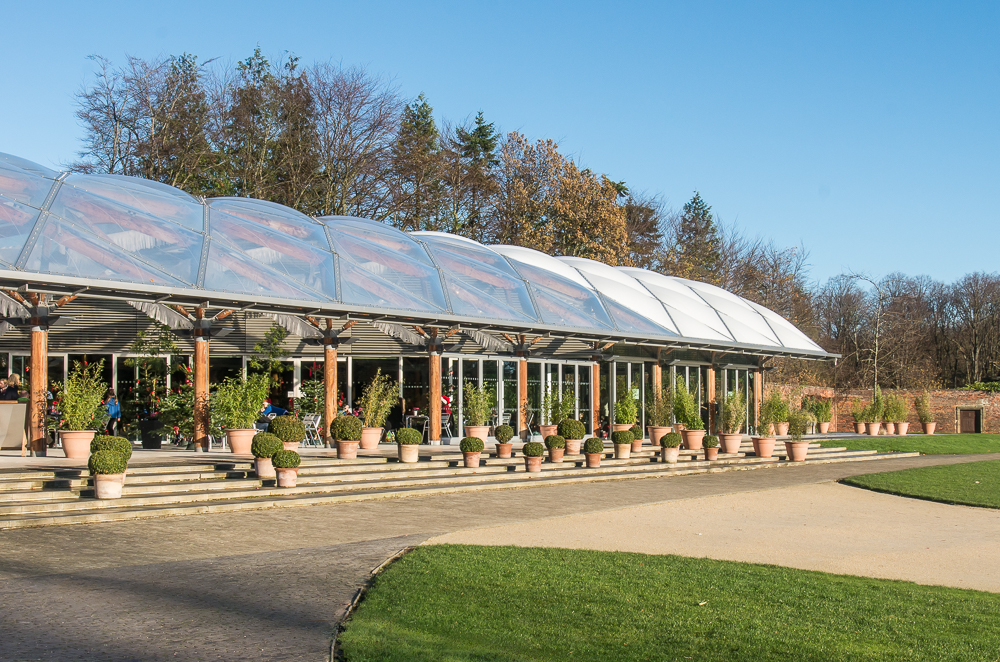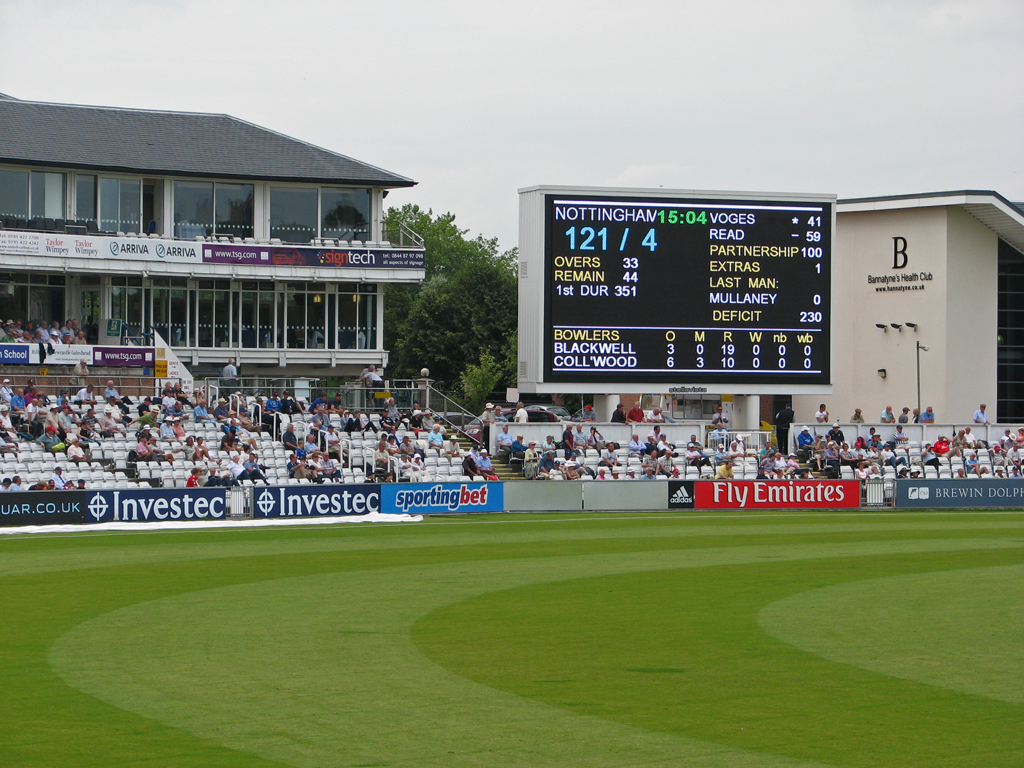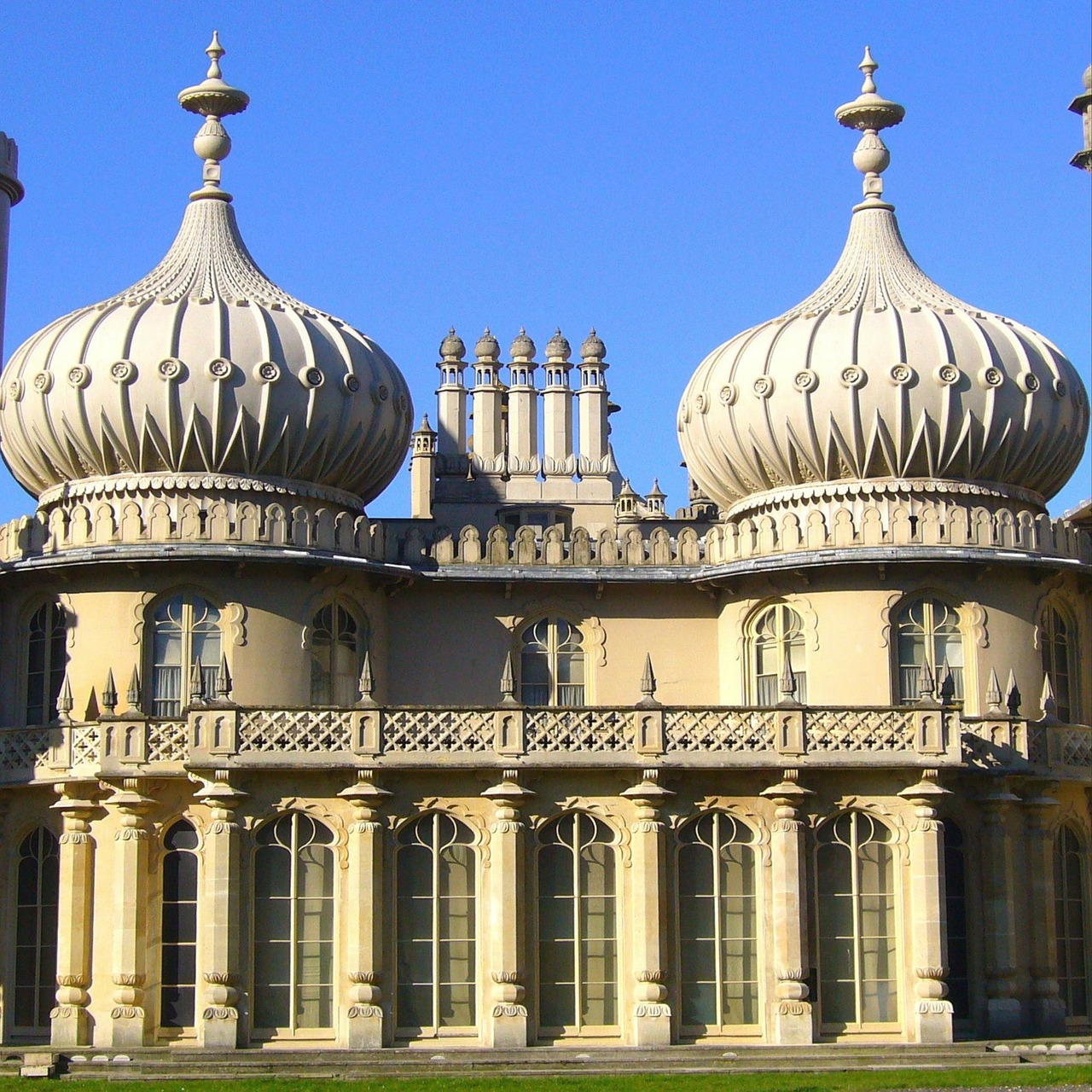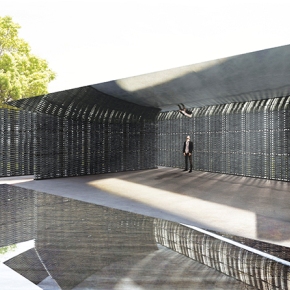Pavilion

|
| The Pavilion at The Alnwick Garden houses the garden café. The Alnwick Garden was the brainchild of the Duchess of Northumberland. It was established in the early 21st century in the grounds of Alnwick Castle. It is a charitable foundation that promotes gardening skills and is run as a separate visitor attraction from the castle itself, providing a wide range of garden settings and a learning experience for children. |
Contents |
[edit] Introduction
Pavilion is an architectural term that typically refers to lightweight, festive and sometimes temporary enclosures such as tent pavilions, garden pavilions and art pavilions and so on.
The origins of the word come from the French pavillon and Latin papilionem, meaning ‘butterfly’ and ‘tent’. This is due to the appearance of a tent’s canvas, which looks like butterfly wings that are open.
[edit] Tent pavilion
Tent pavilions are generally used as a temporary structures for events such as weddings or other functions.
[edit] Garden pavilion
A garden or park pavilion may be open sided and used to provide shelter for exhibitions, restaurants, lectures, sports facilities and so on. In this instance, a pavilion is akin to a bandstand, gazebo, kiosk, poolhouse or summerhouse and often includes seating. Some garden pavilions can be ornamental or delicate structures.

|
| The Don Robson Pavilion (left) at the Durham Riverside cricket grounds is pictured alongside the scoreboard (centre) and Bannatyne's health club (right). |
Some sports pavilions function as changing rooms for participants or serve refreshments. Others provide covered seating areas, particularly in American baseball parks.
[edit] Structural pavilions
A structural pavilion is typically a portion of a larger building. Its lightweight appearance distinguishes it from the main building. It may be placed next to a building (as a subsidiary structure), in front of it (as an entranceway) or on top of it (and only accessible from the rooftop).
[edit] Pavilions of the world
Different types of pavilions are found around the world. They are frequently featured in Chinese parks and gardens, where they provide shade and a place to rest.
The Place des Vosges (built from 1605 to 12) in Luberon, France, includes the Pavillon du Roi (“king’s pavilion”) and the Pavillon de la Reine (“queen’s pavilion”).
In India, the Red Fort includes a row of pavilions connected by a water channel. Built in 1639, these served as imperial apartments for the fifth Mughal Emperor Shah Jahan.
There are several noteworthy pavilions in the UK, including the Royal Brighton Pavilion. This building was constructed in 1822 by John Nash as a pleasure palace for the Prince Regent.
Royal Brighton Pavilion
The Serpentine Pavilion is an annual installation hosted by the Serpentine Gallery in London. Each year, a different temporary structure serves as a showcase for international architects and acts as a backdrop for cultural programming.
Serpentine Pavilion 2018
[edit] Related articles on Designing Buildings
Featured articles and news
The UK's Modern Industrial Strategy: A 10 year plan
Previous consultation criticism, current key elements and general support with some persisting reservations.
Building Safety Regulator reforms
New roles, new staff and a new fast track service pave the way for a single construction regulator.
Architectural Technologist CPDs and Communications
CIAT CPD… and how you can do it!
Cooling centres and cool spaces
Managing extreme heat in cities by directing the public to places for heat stress relief and water sources.
Winter gardens: A brief history and warm variations
Extending the season with glass in different forms and terms.
Restoring Great Yarmouth's Winter Gardens
Transforming one of the least sustainable constructions imaginable.
Construction Skills Mission Board launch sector drive
Newly formed government and industry collaboration set strategy for recruiting an additional 100,000 construction workers a year.
New Architects Code comes into effect in September 2025
ARB Architects Code of Conduct and Practice available with ongoing consultation regarding guidance.
Welsh Skills Body (Medr) launches ambitious plan
The new skills body brings together funding and regulation of tertiary education and research for the devolved nation.
Paul Gandy FCIOB announced as next CIOB President
Former Tilbury Douglas CEO takes helm.
UK Infrastructure: A 10 Year Strategy. In brief with reactions
With the National Infrastructure and Service Transformation Authority (NISTA).
Ebenezer Howard: inventor of the garden city. Book review.
The Grenfell Tower fire, eight years on
A time to pause and reflect as Dubai tower block fire reported just before anniversary.
Airtightness Topic Guide BSRIA TG 27/2025
Explaining the basics of airtightness, what it is, why it's important, when it's required and how it's carried out.
Construction contract awards hit lowest point of 2025
Plummeting for second consecutive month, intensifying concerns for housing and infrastructure goals.
Understanding Mental Health in the Built Environment 2025
Examining the state of mental health in construction, shedding light on levels of stress, anxiety and depression.
























